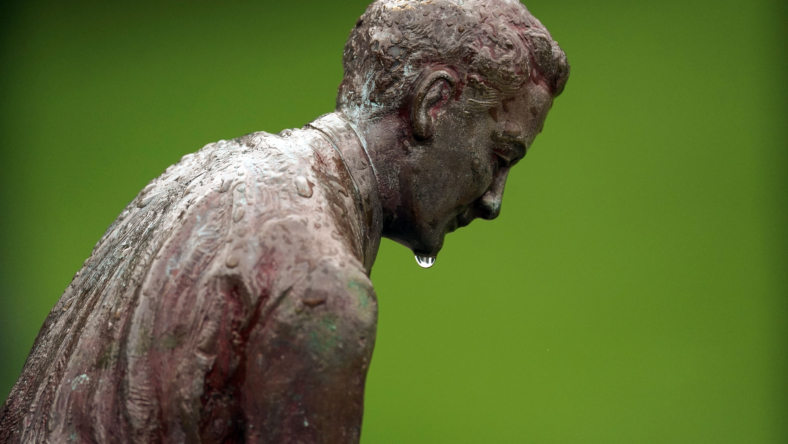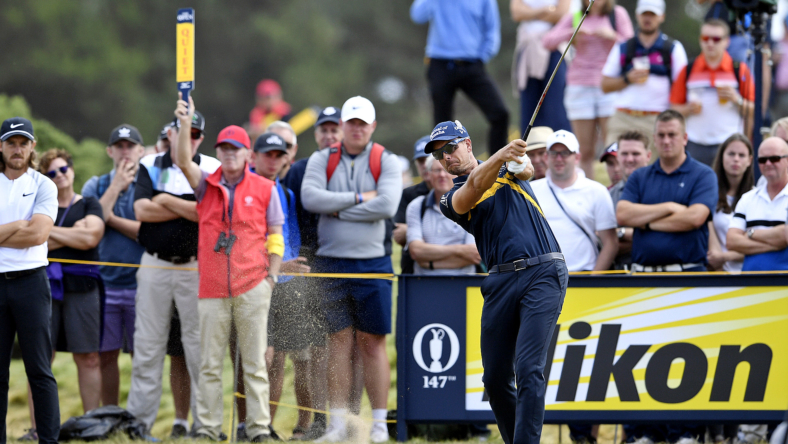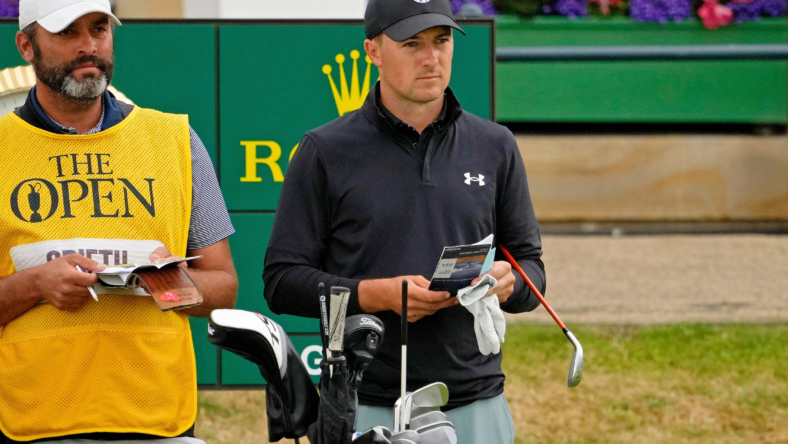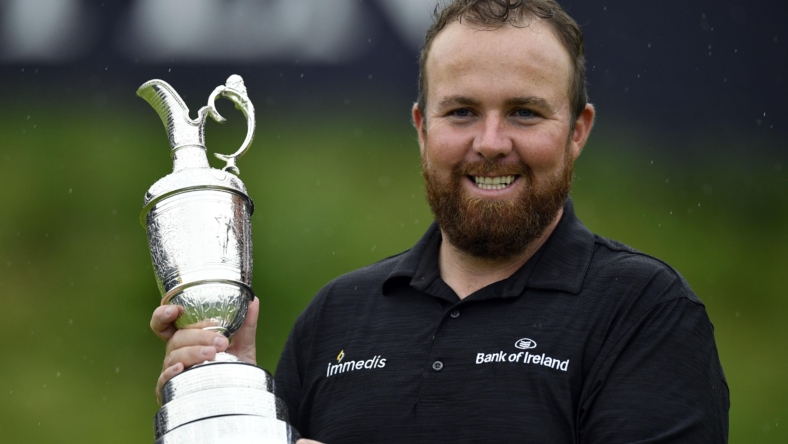The Open Championship has been home to protect the nostalgia of the game as the best players from around the world meet in Scotland every year to go after the Claret Jug and be named the Champion of the Year.
Dating all the way back to 1860, history has been made in all sorts on the links in order to claim one Claret Jug, or maybe six, like Harry Vardon more than 100 years ago.
Here’s a look at the 10 best performances at the Open Championship.
Related: Highest-paid golfers of 2023
10. Young Tom Morris, 1868, Prestwick
One of the first memories of the Open Championship came within its first 10 years. Before St. Andrews became a routine site for the Open Championship, Prestwick was the first location for the first 12 years before 1873.
In 1868, Young Tom Morris was playing in his fourth Open Championship at the age of 17 and 156 days. Morris posted a record 51 in the opening round at Prestwick, which was a 12-hole course.
Morris’ father, Old Tom Morris, was going back and forth with his son for the victory, but it was Young Tom Morris who would prevail with a final round 49, a new record, and recorded a three-round score of 154, which set a new record, previously held by Andrew Strath in 1865 of 162.
Young Tom Morris became the youngest ever Champion at Prestwick and went on to win the next four Open Championships, all at Prestwick.
9. Bobby Jones, 1927, St. Andrews

The Old Course at St. Andrews is on this list many times, not only because of the names and their major championship history, but also for their execution during the most adrenaline-filled moments.
At St. Andrews in 1927, that top name was Bobby Jones, who six years earlier withdrew after 11 holes because of his poor play.
No matter the course, especially at a major tournament level, experience is extremely vital. After his withdrawal in 1921, Jones put together a comeback story for the ages at St. Andrews. The experience would come into fruition and became a favorite in the gallery as Jones went on to his second straight Open Championship by six strokes.
He was also carried off the course by a raucous and jubilant crowd. Because of how much he loved the course and the fans, he asked the R&A for the trophy to be kept in Scotland.
About 30 years later, Jones became the second American to be named “Freeman of the City,” an honor that was also presented to Benjamin Franklin.
“The more you study it, the more you love it, and the more you love it, the more you study it,” Jones said during the ceremony about the Old Course as he received the “Freeman of the City” honor.
8. Henrik Stenson, 2016, Royal Troon

There have been multiple head-to-head battles to determine the Claret Jug and that was no different in 2016.
This time it was the American, Phil Mickelson, going up against the European, Henrik Stenson at Royal Troon. On one side, you had Mickelson, who won an Open Championship in 2013. On the other side, Stenson deserved a major but did not have one at the time. However, time was starting to tick for Stenson.
To win any golf tournament, major or not, you have to finish strong like a long distance runner having that final sprint to the finish line.
Although Mickelson and Stenson were going back and forth, Stenson prevailed with a final round 63 for the victory and recorded 20-under to break the 72-hole score, in relation to par.
7. Jordan Spieth, 2017, Royal Birkdale

Jordan Spieth entered the 2017 Open Championship having come up just short in 2015, but like any major, it was not going to be easy as he showed resilience to win in order to raise the Claret Jug.
The turning point came on the 13th hole of the final round. Spieth’s tee shot went wide right and had to use his brain in order to find the best position to drop his ball.
Spieth decided to drop in the driving range and hit his third shot over a hill for a blind shot. Only knowing the yardage, his ball came to a stop on the first cut and left of the bunker leaving an easy chip. He miraculously got up and down to save bogey.
He regained momentum with a birdie on 14 and eagle on 15 and never looked back. He totaled 5-under over four holes after his near major collapse on the 13th as the Texan claimed the third leg of the career Grand Slam and still needs a PGA Championship victory to this day to complete the Grand Slam.
6. Shane Lowry, 2019, Royal Portrush

For nearly 70 years, Northern Ireland was not a site for an Open Championship until 2019. What better way to end than have an Irishman win in his home country.
That’s what happened to Shane Lowry, who fired a bogey-free 63 in the third round, en route to a score of 15-under par and a six-shot win over Englishman Tommy Fleetwood.
His 63 became the lowest 54-hole score through three rounds after going 67-67-63 (197). Despite missing the cut at the previous four Open Championships, Lowry was able to ride the home crowd in his home country to get him on top.
Anyone who wins in their home country, home state or home city, is always memorable, just like Lowry’s victory in 2019.
5. Arnold Palmer, 1961, Royal Troon
Although Mickelson was battling for a trophy in 2016, about 55 years ago, it was another American in Arnold Palmer who restarted a trend.
Palmer won the 1961 Open Championship over Dai Rees by one shot. However, what was more important, was that it was the first Claret Jug won by an American in eight years by Ben Hogan in 1953.
With no one from the United States winning the Open Championship in eight years, those players felt deterred to play across the Atlantic Ocean, also taking into the account the travel concerns at the time, in addition to other issues, such as low prize money.
However, Palmer’s win in 1961 turned the page on the dry spell for the Americans as it turned wet. In the next six decades, the Claret Jug returned to the United States more than half the time.
4. Jack Nicklaus, 1970, St. Andrews
From 1963 to 1980, Nicklaus recorded a T12 in 1965 and a T6 in 1969. IN the other 15 appearances during that time, he had one fifth place finish, and the rest were better than that, highlighted by wins in 1966, 1970 and 1978.
It’s not like the Masters where it is held at one course every year. This was at a rotation of courses, like a U.S. Open that Nicklaus had to adjust and adapt as quickly as he could.
In 1970, the Open Championship took place at the Old Course at St. Andrews. It feels that all of the greats get their turn to host the Claret Jug at the home of golf. That year came down to a playoff between Nicklaus and Doug Sanders.
On the final hole of the playoff, Nicklaus, who took off his yellow sweater, drove the ball past the green for a shot that traveled about 360 yards. He got up and down for birdie and went into full jubilation mode for his second Open Championship and first of two at St. Andrews.
Also read: What makes the Open Championship’s tradition unique compared to the other three majors
3. Harry Vardon, 1914, Prestwick Golf Club
The early 1900s at the Open Championship was Harry Vardon’s to lose.
In 1914 at Prestwick, he was the oldest champion in tournament history at 44 years old and a mark that stood for 53 years.
In addition, he won the Open Championship for a record, sixth time, a record that one else has reached since.
2. Tiger Woods, 2000, St. Andrews
At the turn of the century, Tiger Woods was at his peak as he was another great that would host the Claret Jug at St. Andrews.
At the 2000 Open Championship, he shot 19-under par, which was the lowest total in Open history and lowest at any major until 2015.
Woods won by eight to Thomas Bjorn and Ernie Els and became the fifth golfer and most recent to win the career grand slam, joining Nicklaus, Hogan, Gary Player and Gene Sarazen.
Woods would also go on to complete the “Tiger Slam” with major victories at each of the four about six month later at the Masters.
Related: Where Tiger Woods ranks on the all-time major victories list
1. Tom Watson, 1977, Turnberry
The “Duel in the Sun” between Watson and Jack Nicklaus was a major for the ages.
Watson, who was 10 years younger than Nicklaus during that Open Championship, was going back and forth and pulling away from the field so much that they were 10 strokes ahead.
He birdied four of his final six holes for the dramatic victory over Nicklaus during the final round on Saturday.
Not only was the competition high, but the sportsmanship was high as the head-to-head rivalry marked its next chapter between the two.
After the conclusion of the tournament, Watson looked at Nicklaus and said, “this is what it’s all about isn’t it?”
Nicklaus replied, “You bet it is.”